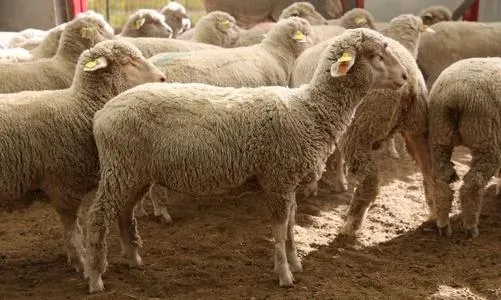As the weather warms up, parasites of various livestock begin to come alive again. Sheep in vitro parasites mainly parasitize the appearance of sheep, usually can be observed with the naked eye, common sheep tick disease, sheep tick fly disease, sheep nose fly larval disease, sheep scabies ringworm disease and so on. If sheep are found to be infected with these diseases, timely medication treatment can be effectively controlled. In addition, if you strengthen prevention in normal times, you can also prevent the occurrence of this disease.

1. What are the parasites in vitro sheep?
1. Sheep tick disease
Ticks, also known as grass turtles and grass crawlers, are in vitro parasites that suck blood nights on the surface of small animals after biting. Ticks can be divided into two types: hard ticks and soft ticks, which are critical to damage mammals and very few to poultry. The growth and development of ticks goes through four links: eggs, insects, insects and nymphs. In it, juveniles, juveniles and nymphs must survive by physically sucking blood on the surface of the host body. After the female tick sucks blood on the main surface of the host, she leaves the host to work in the road, wall cracks and other places, and after 1 to 4 weeks, it has just begun to lay eggs. Eggs have been ovulated over time to become juveniles, juvenile worms, and nymphs. Ticks in the three northeastern provinces are mostly active in summer and autumn. In addition to the immediate mechanical damage to the host skin, ticks often become the promoters of a variety of key viral diseases, germ diseases and malaria parasite diseases, and their damage cannot be underestimated. The incidence of sheep tick disease is high, and the incidence of sheep in lambs and young people is more serious.
2. Sheep tick fly disease
The sheep tick fly is a dark brown wingless outer endophyte parasite that is a permanent split-headed larvae on the surface of the sheep body. The prevalence of the disease is high throughout China. After the sheep tick fly leaves the female fly, it quickly becomes a pupae, which can be feathered into an adult fly after 20 days or so. Sheep tick flies are spread in a flock of sheep based on direct contact, and can also be spread indirectly according to mat grass, special tools, etc.
Tick flies are more concentrated on the skin of the sheep's neck, chest, buttocks, abdomen and other positions to inhale blood night, making the sheep restless, feeding reduced, biting, kicking or rubbing the parasitic position of tick flies. Sheep with more severe sensations experience different levels of iron deficiency anemia and weight loss, and the coat is not smooth, cracked or falls.
3. Sheep-nosed fly larval disease
This is a disease caused by parasitism of the larvae of the sheep berserk fly in the nasal cavity or sinuses. Sick sheep show irritability, rhinitis, squirring, serous or purulent nasal juice, and the formation of pus around the nostrils, causing difficulty breathing. When the larvae enter the human brain, they appear to swing their heads, bend to one side, and walk out of balance
4. Scabies ringworm disease in sheep
This is a chronic contact dermatosis caused by wax worm parasitism on the skin. Sick sheep are severely itchy, dermatitis, hair removal, dementia, increasingly emaciated, and in severe cases, cause death.
Second, how to treat sheep ectoparasites?
1. Choose ivermectin intradermal injection to deworm, and inject intradermal deworming again half a month apart;
2. In order to improve the actual effect of insect repellent, a sprayer or bath such as dimethodium or dimethylpyridine can be selected separately;
3, (1) use waste oil to wipe (2) choose 1 part of tobacco, 10 parts of water, boil into juice to carry out rubbing (3) fresh walnut leaves poured into viscous wipe.
Note: (1) Pregnant sheep should be cautious about using ivermectin subcutaneous injection, which can be treated with in vitro spray or application of the drug;
(2) After the sheep are dewormed, attention should be paid to cleaning and disinfecting the sheep house to avoid re-infection;
(3) After deworming, the sheep should be appropriately increased in nutrition to increase the strength of the sheep and enhance the resistance.
Third, how to prevent sheep ectoparasites?
1. Do a good job in the sanitation and disinfection of the enclosure, immediately remove the fecal sewage of the enclosure and enhance the natural ventilation to reduce the humidity of the enclosure environment, and in addition, the pen is disinfected and sterilized on time without neglecting all blind spots such as wall cracks and wall feet;
2. Choose high and dry lawns when grazing, and minimize grazing in wet and cold places in low-lying land;
3. On time, the sheep should be selected for intradermal injection of ivermectin to deworm, and its insect repellent, dimethyl amidine and other sprayers or bubble baths to repel insects.